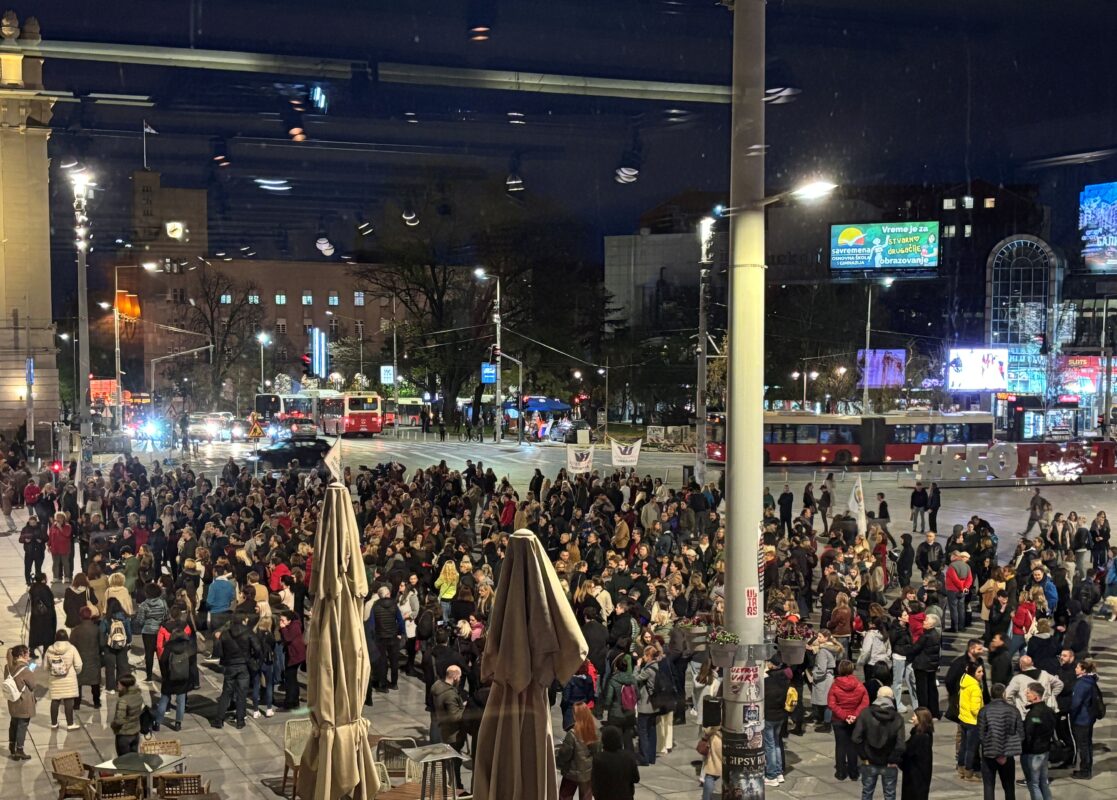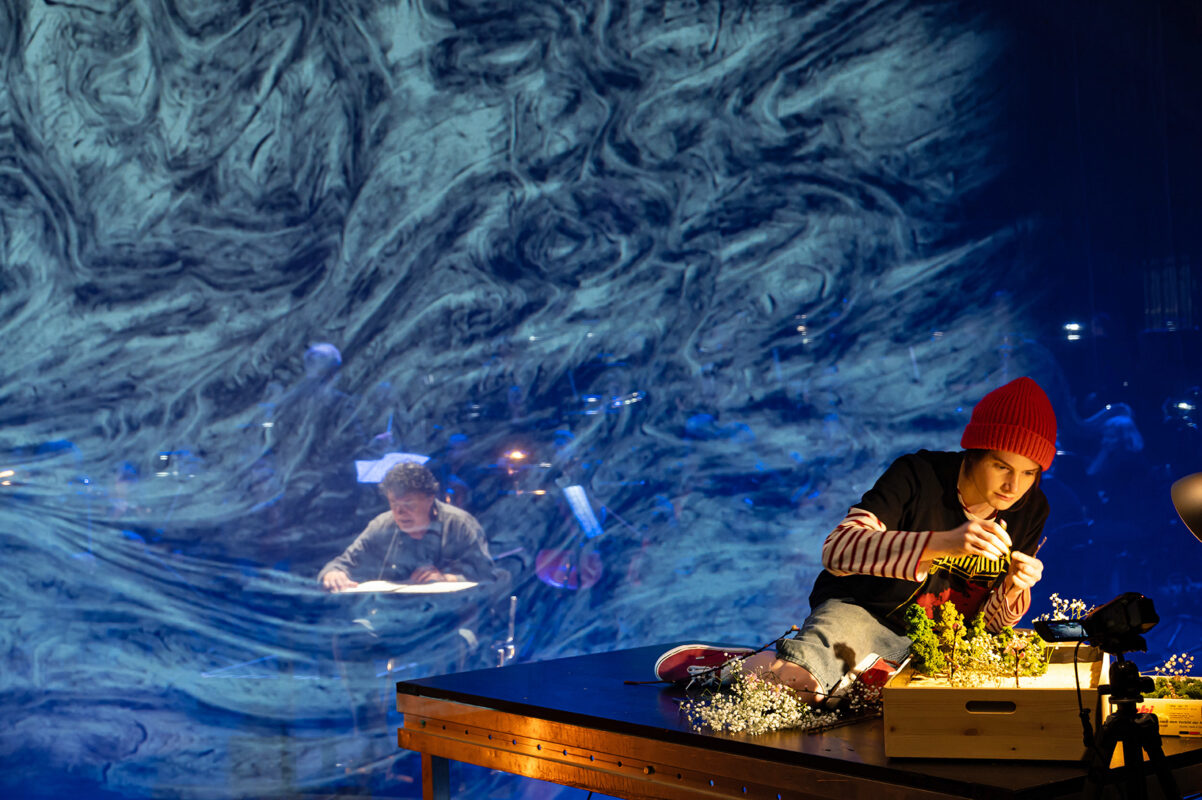Forum Wallis: New music within medieval walls
The Forum Valais is an internationally well-connected festival in a spectacular location.
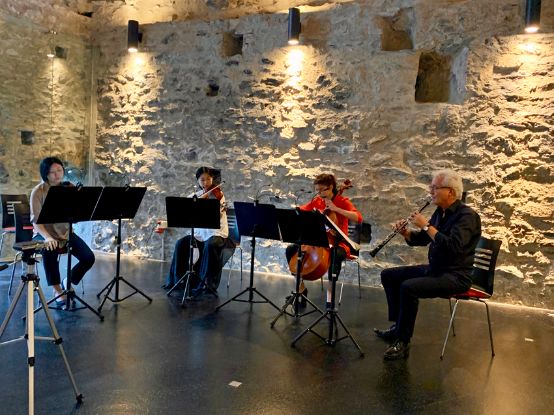
Every festival has its identity-forming halls and buildings. Bayreuth has the Festspielhaus, Salzburg the Felsenreitschule, Lucerne the KKL. And the Forum Valais has the unique Leuk Castle.
The former summer residence of the bishops of Sion from the late Middle Ages, situated high above the valley at the entrance to the village and surrounded by vineyards, was gently renovated architecturally by Mario Botta and has been managed by the Leuk Castle Foundation since 1996, which has established a cultural center with international appeal here. This spectacular building also hosts the Forum Valais. The three-day festival usually takes place at Whitsun, but this time in August due to the pandemic. The main concert hall is a ground-floor room, in the raw brickwork of which the discreetly lit traces of the false floors and the mighty fireplace are still visible overhead. The acoustically excellent sound space extends up to the roof, and a glass façade on the entrance side makes you forget that you are surrounded by meter-thick walls. This unique ambience alone makes a concert visit something special.
Free access to the concerts
The Valais Section of the International Society for New Music (IGNM-VS) organizes the festival, the programmer is its chairman Javier Hagen from Brig, who is also the IGNM Switzerland presides over the festival. Two dozen institutions, from Loterie Romande to regional sponsors, finance the festival. The festival's own income comes from donations and admission is free. "The IGNM-VS," says the organizers, "expressly wants to guarantee access to contemporary music and culture free from economic constraints." The village of Leuk also benefits: it can profit from the indirect profitability.
In keeping with the venue, the concerts mainly present chamber music and solo pieces with and without electronics. There is no thematic focus. There is a relaxed, almost informal atmosphere and you quickly come into contact with the performers.
The festival director as networker and interpreter
Anyone who thinks this is just a provincial meeting is mistaken. The people of Valais are known to be a lively bunch, and not just when it comes to football. Javier Hagen, a passionate cultural activist, plays the keyboard of his international connections with virtuosity. As a gifted networker, he can call on a host of excellent performers for his festival at any time. UMS'n JIP serves as a kind of passe-partout to the international circles of musicians and event organizers. The abbreviation is the trademark of the duo for voice and recorders, which Hagen, a trained singer and composer, forms together with Ulrike Mayer-Spohn. The organizers are obviously keen on the unusual line-up; the two perform around one hundred and forty times a year from Europe to the Far East.
The duo has now performed two large-scale works at the Forum Wallis. Under the title Playing with Morton it offered the minimalist Three Voices by Morton Feldman in a version for voice, recorders and playback. It maintained the tension in the meditative piece for over five quarters of an hour with unshakeable calm.
The last things are negotiated here
-
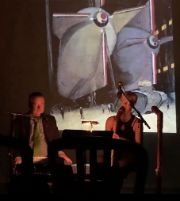
The duo UMS'n JIP, world premiere of Mathias Steinauer's "Einfalt". Video still: Max Nyffeler
A second performance by the duo was the world premiere of a new work by Mathias Steinauer for voice/synthesizer, recorders and image projections: an eleven-part song cycle based on text fragments by the Chinese poet Du Fu from the eighth century. The title Simplicity - It is intended to refer to the absence of "false consideration, pretense and dishonesty" - is pure understatement. The content revolves around the major theme of transience and is reflected musically with haunting precision. The reduction to the essentials in terms of message and processing leaves a strong impression. The tonal level is visually counterpointed by the projection of images by John Lavery (1856-1941), who was active both as a fin-de-siècle society painter and as a documentarist during the First World War. A visual alienation effect that makes the subject matter appear in a completely different light.
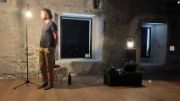
Steinauer's turn to the last things found a continuation in the solo performance slow fire | by me of the one generation younger Lukas Huber. The term "opera" was, of course, an overstatement, but in his rejection of non-binding material experiments and common political slogans, and in the existential urgency with which he formulated his message of the nothingness of our existence, Huber undoubtedly struck a nerve with his simple performance. A chair, a small table, a small device for simple electronics and a naked light bulb that spread a dim light: these were the only props for his spoken and sung monologue, which was enriched with quotes from the ancient Greeks to contemporary writers. The visitors formed a semi-circle around the sparse scenery. The séance ended with a gentle missionary gesture - as a parting gift, each visitor was given a small tract with the key messages of the performance.
Concert marathon with acousmatic music
That was the way inwards. The world of the material outside came to the fore in a "Long Night of New Music". The Forum Wallis had launched a worldwide "Call for acousmatic works", jurors from four continents then selected the pieces from the submissions, which were now performed in a concert marathon. The sound direction was provided by young composers under the direction of Simone Conforti, who works at Ircam Paris and teaches at the Cuneo Conservatory. The aesthetic spectrum of the works was broad, but there were some underlying similarities, such as the sensual perception of sound and an individual, often playful approach to the possibilities of the computer as a technical medium.
-
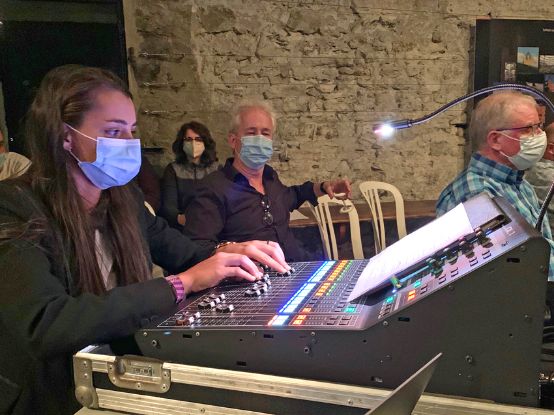
Long night of new music. A sound director during the sound marathon. Photo: Max Nyffeler
The percussionist, who commutes between New York and Africa, also uses electronic means, but in combination with live instrumental playing Lukas Ligeti. On a kind of midi marimba, he unfolded a virtuoso performance in which the complex rhythmic structures of African musical practice were recognizable. The sounds are stored in the computer and come from the loudspeaker, whereby their character can be profoundly altered by nuances of touch.
Notated music versus improvisation
Two improvisation concerts served as a contrast to the loudspeaker music. The trio Manuel Mengis (trumpet), Roberto Domeniconi (keyboard) and Lionel Friedli (percussion) ended the festival with a computer-based improvisation that moved between helpless, lost poking around in sound crumbs and anarchic wildness. A thunderstorm that had just begun provided the perfect counterpoint. The trio Urban Mäder (voice, sound objects), Hans-Peter Pfammatter (synthesizer) and Silke Strahl (saxophone) were more sedate: three individualities who are perfectly attuned to each other and can come together to create sensitively formed sound processes. The search movements in the creation of larger tension sequences are as logical as if they had been rehearsed.
-
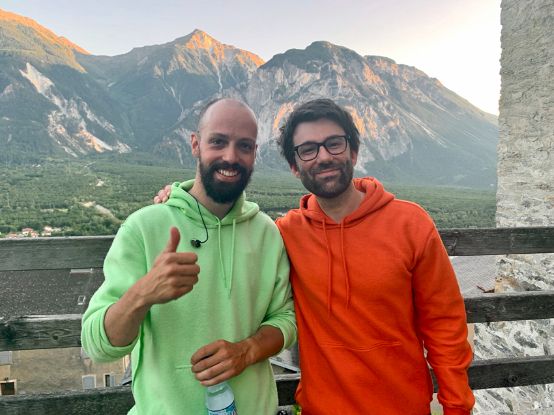
Hyper Duo. Gilles Grimaître (right) and Julien Mégroz. Photo: Max Nyffeler
This cultivated togetherness was preceded by an eruptive concert by the Hyper Duo from Biel with Gilles Grimaître on keyboard and Julien Mégroz on percussion instruments. In an hour-long tour de force, they played four works by four composers, each linked by short transitions, each in its own way with a virtuosity that turned the rhythmic interplay in particular into a high-wire act. It was pure precision and joy of playing, a breathtaking demonstration of musical manpower. And also a fine demonstration of the penetrating power of notated music when it is brought to life so passionately. Compared to this, the improvisation concerts seemed a bit old school.
Impressive young talent
The varied festival program began with a pick-me-up bearing the signature of the Ensemble Modern. The Oboist Christian Hommel had rehearsed works from Benjamin Britten to Rebecca Saunders with three members of the International Ensemble Modern Academy, once again demonstrating the high interpretative culture of this ensemble. He himself shone with the wild-sounding solo piece that mobilized all physical resources Unusual by Rolf Riem. The Korean violinist Jae A Shin performed Bernd Alois Zimmermann's eminently difficult early solo sonata, which was peppered with double stops, with great verve. With young talent like this, there is no need to worry about the future of music.






